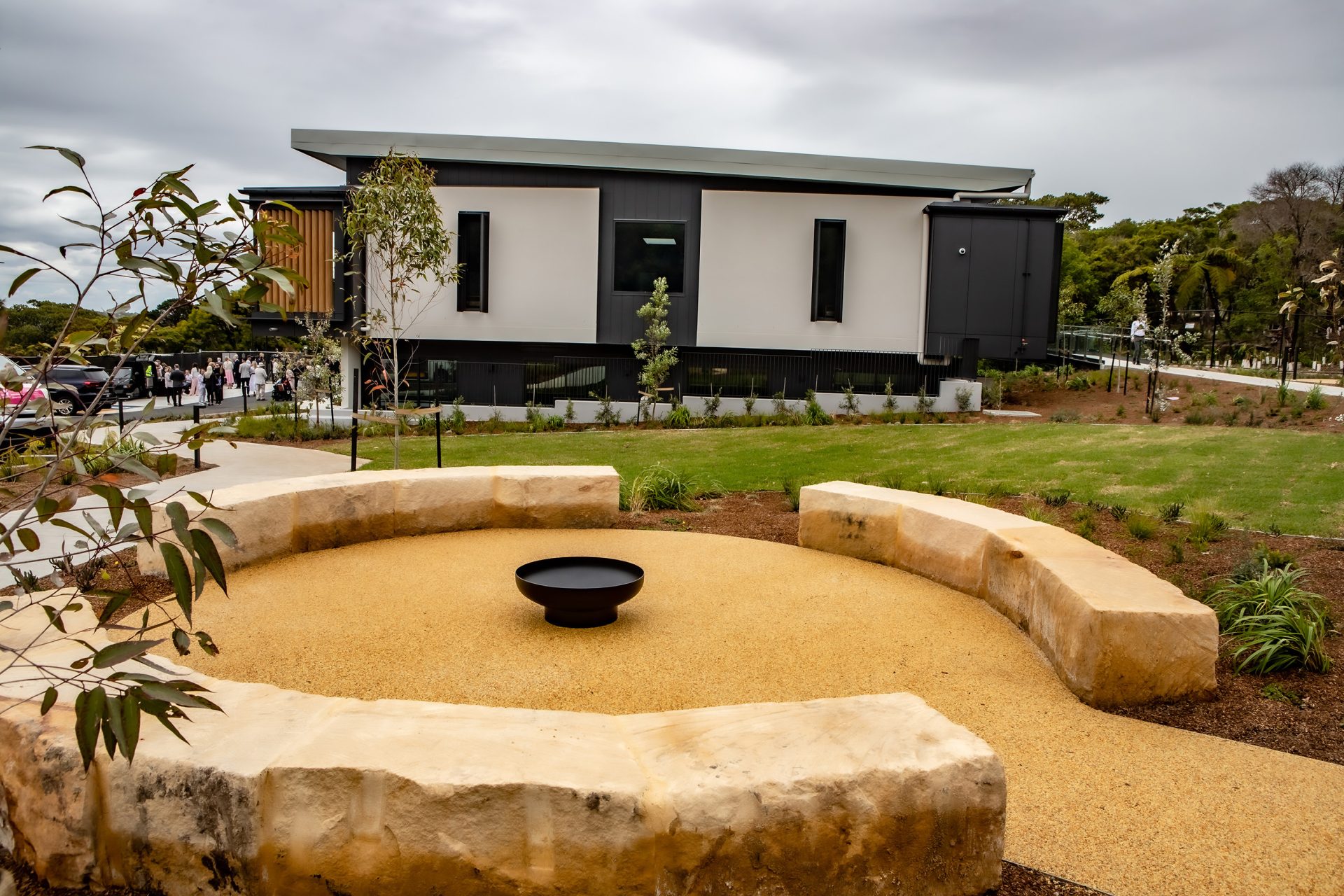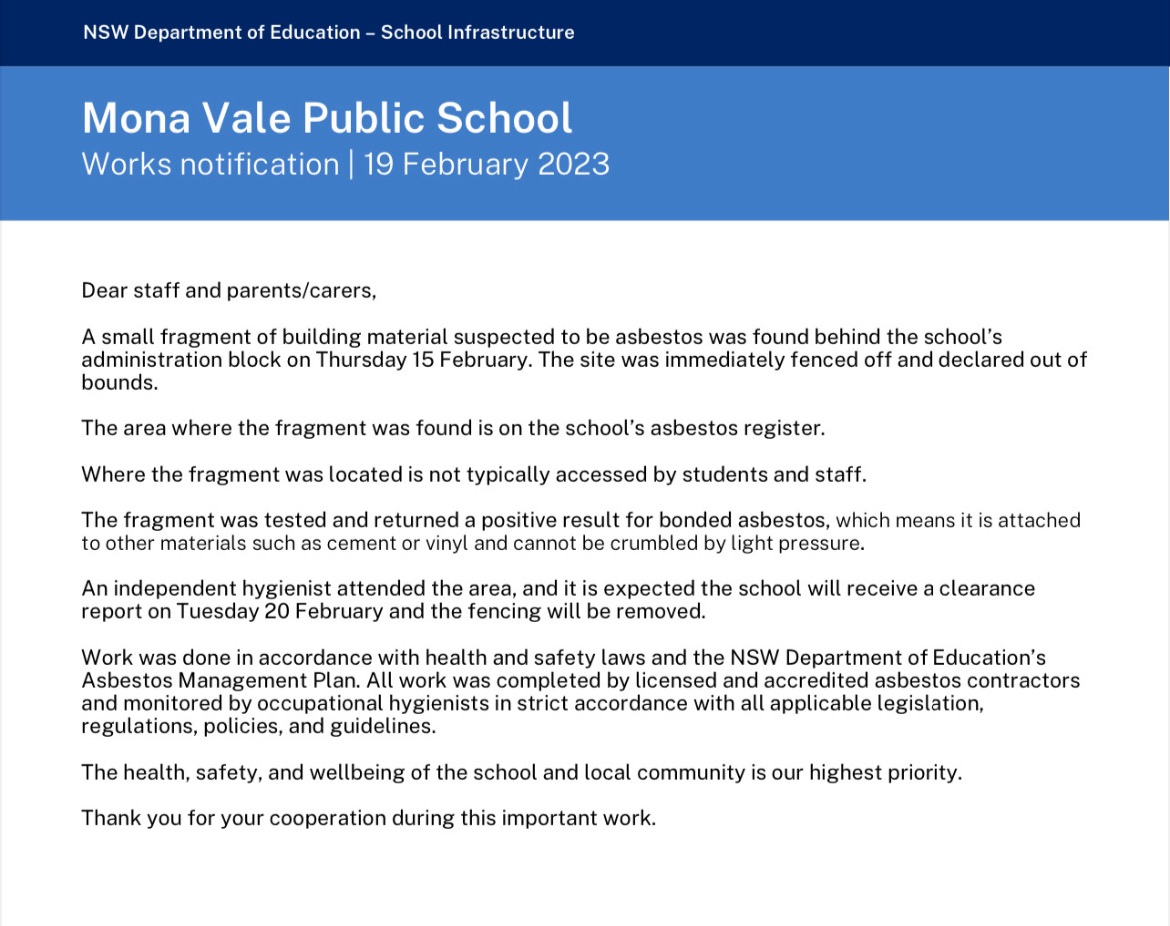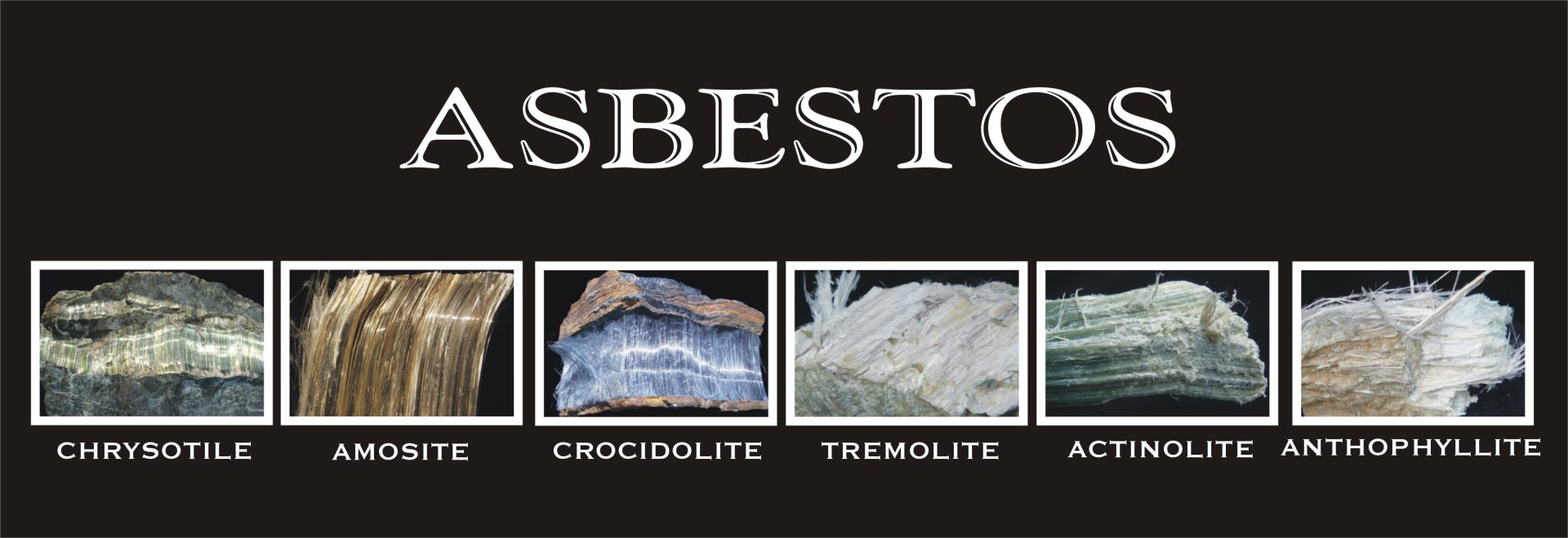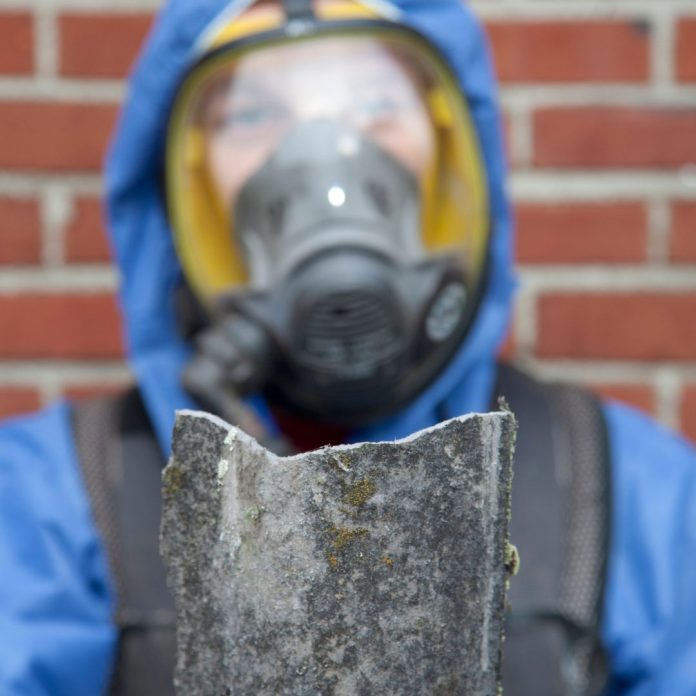23 February story update: We are reliably informed the samples at Manly AYAH site has tested negative for asbestos.
Previously 21 February: Two more sites on the Northern Beaches have been identified as having possibly received asbestos-contaminated garden mulch, as the NSW Environment Protection Authority (EPA) expanded their Asbestos Task Force to pursue the distribution of hazardous materials across Sydney.
The two sites are Manly Adolescent and Young Adult Hospice on North Head, which only opened 14 months ago, and Mona Vale Public School. (See details below)
In what has become known as the Sydney Asbestos Crisis, a growing list of potentially affected premises has been linked to one supplier of recycled semi-organic compost.
In 48 hours the number of contaminated sites across Sydney metropolitan area increased from 32 known premises on Monday 19 February to over 40 by Wednesday, with potentially hundreds more to come.

The first Northern Beaches detection, as Manly Observer previously reported, saw protective screens erected around a garden bed in the central playground of Allambie Heights Public School on Friday 16 February, after a piece of bonded asbestos was found in mulch.
Children were not at risk, although EPA agents wearing HAZMAT equipment were brought in to isolate the garden bed and render it safe.
At Liverpool West School, however, over 600 students have been locked out for over a week whilst a major operation to remove over 1000 tonnes of contaminated materials from around the school grounds is undertaken. The NSW Minister for Education and Early Learning, Prue Carr, said “Unfortunately, the contractor in question, instead of using soil in the garden beds, actually used the mulch as garden fill.”
Mulch or mystery source?
Along with other newly identified medical facilities, including Macquarie Hospital, Hornsby Ku-ring-gai Hospital and Tresillian Family Care Centre (in Wollstonecraft), the EPA confirmed Manly Adolescent and Young Adult Hospice is currently undergoing “precautionary testing,” and furthermore, “impacted areas at these sites will be cordoned off.”
A spokesperson for the Manly hospice confirmed the EPA listing but declined to comment.

Mona Vale Public School released a Works Notification on 19 February stating: “A small fragment of building material suspected to be asbestos was found behind the school’s administration block on Thursday 15 February… The fragment was tested and returned a positive result for bonded asbestos.”
However, it is not yet known whether the latter asbestos discovery was part of the same contaminated garden mulch that was distributed among a wide variety of institutions, educational facilities, parks and public transport sites, as listed on the EPA’s Positive Detection of Asbestos Types register.
The school revealed “the area where the asbestos was found is on the school’s asbestos register.”

Since 2 January when the first reports of bonded asbestos pieces were found by a member of the public near a children’s play area in the newly-opened Rozelle Parklands, the EPA investigation has intensified. This led to the formation of the Asbestos Task Force on 15 February.

An EPA spokesperson confirmed to Manly Observer that they were “quite overwhelmed” by the amount of inspections and testing they have undertaken to determine how far the contaminated mulch has spread, and the supply chain that introduced asbestos to the mix.
NSW Premier Chris Minns announced in a public briefing, “This is a criminal investigation, and as a result of that, the EPA are conducting contact tracing of all the mulch. At the same time as they’re securing sites and keeping the public safe, they’re also progressing their criminal investigation.”
So far, the EPA’s investigation has led them to focus on a single supplier linked to all of Sydney’s contaminated sites, Greenlife Resource Recovery Facility (GRRF), which operate from a rural site in the outer western suburbs. Their mulch is primarily made from ‘eco-friendly’ recycled timber pallets.
A Court Order has been enforced to suspend their business while the investigation is underway.
So how do asbestos fragments get into garden mulch, which typically consists of organic substances, such as decaying leaves, shredded bark, straw and gravel?
Speaking on Triple J Radio’s ‘Hack’ program episode on 21 February, Mick Lydon from Asbestos Solutions Tasmania (ASTAS) said, “People are looking to dispose of their asbestos illegally, because it’s expensive to get rid of. You’ve got to double-wrap it, you’ve got to do all the things the EPA require.
“Your general waste that goes to the tip is heavily scrutinised. Even trucks have little cameras to see what rubbish goes in. But the ‘green’ waste is not so heavily scrutinised, and [unscrupulous] people have found that loophole.”

How dangerous is asbestos?
Banned in Australia since December 2003, despite its toxic effects being first researched and reported in 1898, asbestos is a fibrous silicate material that, if inhaled, can cause debilitating and often fatal lung conditions.
These include asbestosis, mesothelioma and lung cancer, however, symptoms may take up to three decades to manifest in those whom are afflicted.
Safe Work Australia warns asbestos comes in two main types:
* Friable – asbestos that is easily crushed into a powder. Friable asbestos has a higher risk of airborne fibres being released when it is handled.
* Non-friable (bonded) – asbestos that is mixed with cement or resin to keep fibres in place. Non-friable asbestos poses a risk of releasing airborne fibres if it gets damaged.
Friable asbestos was frequently used in household walls and ceilings throughout the 20th century because of its insulating properties and resistance to fire.
NSW Environment Protection Authority – asbestos investigation updates: https://www.epa.nsw.gov.au/news?search=asbestos



